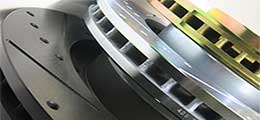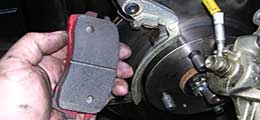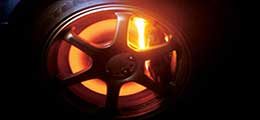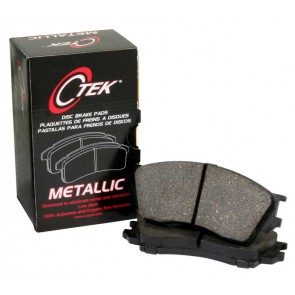Semi-Metallic Brake Pads
-
1956 Jaguar MK I 2.4 CTEK Semi-metallic Brake Pads
FromFrom $33.72 -
1956 Jaguar MK I 3.4 CTEK Semi-metallic Brake Pads
FromFrom $33.72 -
1957 Jaguar MK I 2.4 CTEK Semi-metallic Brake Pads
FromFrom $33.72 -
1957 Jaguar MK I 3.4 CTEK Semi-metallic Brake Pads
FromFrom $33.72 -
1957 Jaguar XK 150 CTEK Semi-metallic Brake Pads
FromFrom $33.72 -
1958 Jaguar MK I 2.4 CTEK Semi-metallic Brake Pads
FromFrom $33.72 -
1958 Jaguar MK I 3.4 CTEK Semi-metallic Brake Pads
FromFrom $33.72 -
1958 Jaguar MK IX CTEK Semi-metallic Brake Pads
FromFrom $33.72 -
1958 Jaguar XK 150 CTEK Semi-metallic Brake Pads
FromFrom $33.72 -
1958 MG Mga Twin Cam CTEK Semi-metallic Brake Pads
FromFrom $33.72 -
1959 Aston Martin DB4 CTEK Semi-metallic Brake Pads
FromFrom $33.72 -
1959 Ferrari 250 CTEK Semi-metallic Brake Pads
FromFrom $33.72 -
1959 Jaguar MK I 2.4 CTEK Semi-metallic Brake Pads
FromFrom $33.72 -
1959 Jaguar MK I 3.4 CTEK Semi-metallic Brake Pads
FromFrom $33.72 -
1959 Jaguar MK II CTEK Semi-metallic Brake Pads
FromFrom $33.72 -
1959 Jaguar MK IX CTEK Semi-metallic Brake Pads
FromFrom $33.72 -
1959 Jaguar XK 150 CTEK Semi-metallic Brake Pads
FromFrom $33.72 -
1959 MG Mga Twin Cam CTEK Semi-metallic Brake Pads
FromFrom $33.72 -
1960 Aston Martin DB4 CTEK Semi-metallic Brake Pads
FromFrom $33.72 -
1960 Ferrari 250 CTEK Semi-metallic Brake Pads
FromFrom $33.72 -
1960 Jaguar MK II CTEK Semi-metallic Brake Pads
FromFrom $33.72 -
1960 Jaguar MK IX CTEK Semi-metallic Brake Pads
FromFrom $33.72 -
1960 Jaguar XK 150 CTEK Semi-metallic Brake Pads
FromFrom $33.72 -
1960 MG Mga Twin Cam CTEK Semi-metallic Brake Pads
FromFrom $33.72 -
1961 Aston Martin DB4 CTEK Semi-metallic Brake Pads
FromFrom $33.72 -
1961 Ferrari 250 CTEK Semi-metallic Brake Pads
FromFrom $33.72 -
1961 Jaguar MK II CTEK Semi-metallic Brake Pads
FromFrom $33.72 -
1961 Jaguar MK IX CTEK Semi-metallic Brake Pads
FromFrom $33.72 -
1961 Jaguar MK X CTEK Semi-metallic Brake Pads
FromFrom $33.72 -
1961 Jaguar XK 150 CTEK Semi-metallic Brake Pads
FromFrom $33.72

Many sport or performance vehicles come standard equipped with semi-metallic brake pads from their manufacturers. This is because semi-metallic brake pads have the ideal combinations of attributes suited for these vehicles and stopping power is one of them. Semi-metallic brake pads have a high heat threshold and have higher brake fade resistance compared to a ceramic brake pad. They may also be less expensive than ceramic brake pads; however, semi-metallic brake pads do have a few small disadvantages when compared to ceramic brake pads.
Semi-metallic brake pads are a mixture of brass, copper, steel and metallic fibers. These materials are more abrasive and can potentially cause the brake rotors to wear down more quickly. Compared to a ceramic brake pad, semi-metallic brake pads may not last as long and may produce a noticeable amount of brake dust. There is also a possibility that your brakes may create noise or low squeal, however since semi-metallic brake pads were designed for light or heavy track use, noise is generally not an issue.
We recommend semi-metallic brake pads for drivers that demand the ultimate stopping response and power. This stopping power, to some drivers, compensates for the few possible minor disadvantages semi-metallic brake pads have. For a longer lasting brake pad with similar qualities as semi-metallic brake pads, try our Posi Quiet Extended Wear brake pads!

- excellent wear qualities
- very low dust
- operates well in a wide temperature range
- chart relative to usage









